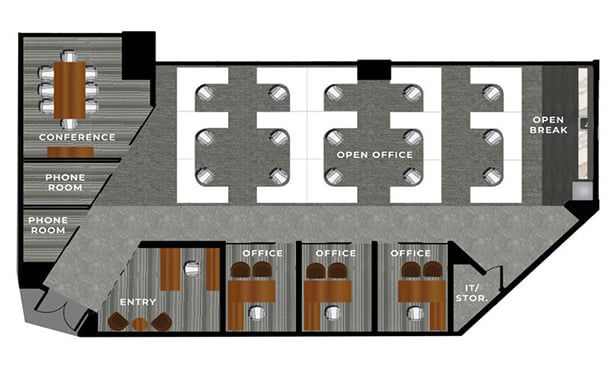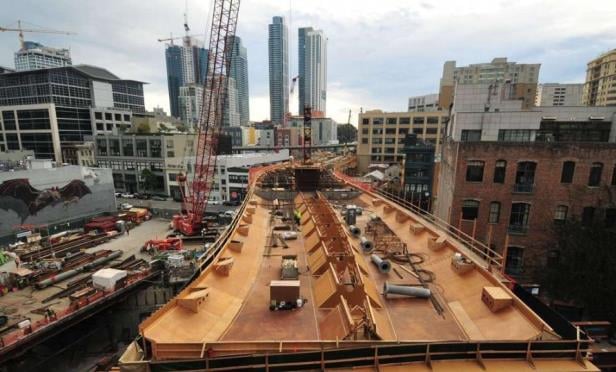NEW YORK CITY—The New York City Department of Buildings has authorized construction of 20,329 residential units in 1,513 buildings in 2014, an 11% increase in terms of units from 2013. In 2013, permits were issued for 18,378 units in 1,383 buildings, according to a New York Building Congress analysis of U.S. Census data. Brooklyn remains the hotspot, of the five boroughs, being the place were the most permits were pulled for the third consecutive year.
This marks the fifth consecutive year that the number of authorized residential units city-wide has increased from the previous year. In addition to the double-digit percent increase from 2013, the number of permits issued in 2014 was up 84% from 2012, when 11,034 permits were issued, and up 241% from a post-recession low of 5,953 units in 2009.
Despite the continued resurgence in the housing sector, residential permits remain far below the levels attained between 2005 and 2008, a four-year period in which the DOB issued permits for more than 30,000 units annually. At its 2008 peak, the DOB issued permits for 33,170 units in 2,299 buildings.
Of the 20,329 permitted units, approximately 91% are in buildings with five or more units. Six percent of the units were authorized in one- and two-family houses, and three percent were for three- and four-family homes.
With 37% of all permitted residential units in 2014, Brooklyn reigned supreme among the boroughs again. In fact, Brooklyn's total of 7,551 DOB-authorized units is the largest annual total in any borough since 2008.
“Despite coming up short in its bid to host the 2016 Democratic Convention, Brooklyn is the place to be right now,” says New York Building Congress president Richard Anderson. “From Williamsburg and Downtown Brooklyn to the Gowanus and Fourth Avenue, the borough is teeming with residential construction crews and cranes.”
Manhattan, with 5,281 units, was the runner-up for the second year in a row, followed by Queens with 4,900 units. Much further down the list were the Bronx with 1,885 units and Staten Island with 712.
While Staten Island ended up on the bottom of the list in terms of total permitted units, it actually led the 2014 pack in terms of number of permitted buildings, at 479. This works out to about 1.5 units per building, which speaks to the pre-dominance of one- to two-family dwellings in that borough.
Manhattan resides at the opposite end of the spectrum. The 5,281 new units of housing authorized by the DOB in 2014 will be created in just 78 buildings, which equates to approximately 68 units per building.
There were approximately 11 units per permitted building in Queens (4,900 units in 448 buildings), 17 units per building in the Bronx (1,885 units/108 buildings) and 19 units/building in Brooklyn (7,551 units/400 buildings).
Fourteen of the top 20 new residential projects, including the top five, as measured by value of overall construction, were initiated in Manhattan in 2014. The top projects include a residential, hotel, and museum tower at 53 W. 53rd St. and Extell's Nordstrom tower on West 57th Street, as well as new residential towers that are rising on Central Park South, Riverside South, and on one of Con Ed's former properties near the United Nations.
Four of the top 20 project starts in 2014 were in Kings County, three of which are located in Downtown Brooklyn with the other in Williamsburg. The remaining two projects in the top 20 are currently rising in the Long Island City section of Queens.
According to the Building Congress analysis, the average estimated hard cost of construction per unit reached $99,500 in 2014, an increase of $1,000 per unit from 2013. The cost per unit in Staten Island reached $170,300, while the overall cost in the other four boroughs ranged from $93,500 (in Queens) to $99,300 in Manhattan. The discrepancy in costs is a result of Staten Island being home to far more one- and two-family construction projects, which are more expensive to build on a per-unit basis than larger, multi-family housing.
“While the hard costs of construction are rising, they do not seem to be outpacing the overall economy in terms of cost inflation,” Anderson notes. “The bigger concern, however, is the increasing cost of land acquisition, which is not reflected in the permitting data. Our ability to continue the residential boom and expand it to other neighborhoods will depend largely on those costs and the city's willingness to rezone portions of the outer boroughs to make development more cost effective.”
© Touchpoint Markets, All Rights Reserved. Request academic re-use from www.copyright.com. All other uses, submit a request to [email protected]. For more inforrmation visit Asset & Logo Licensing.







